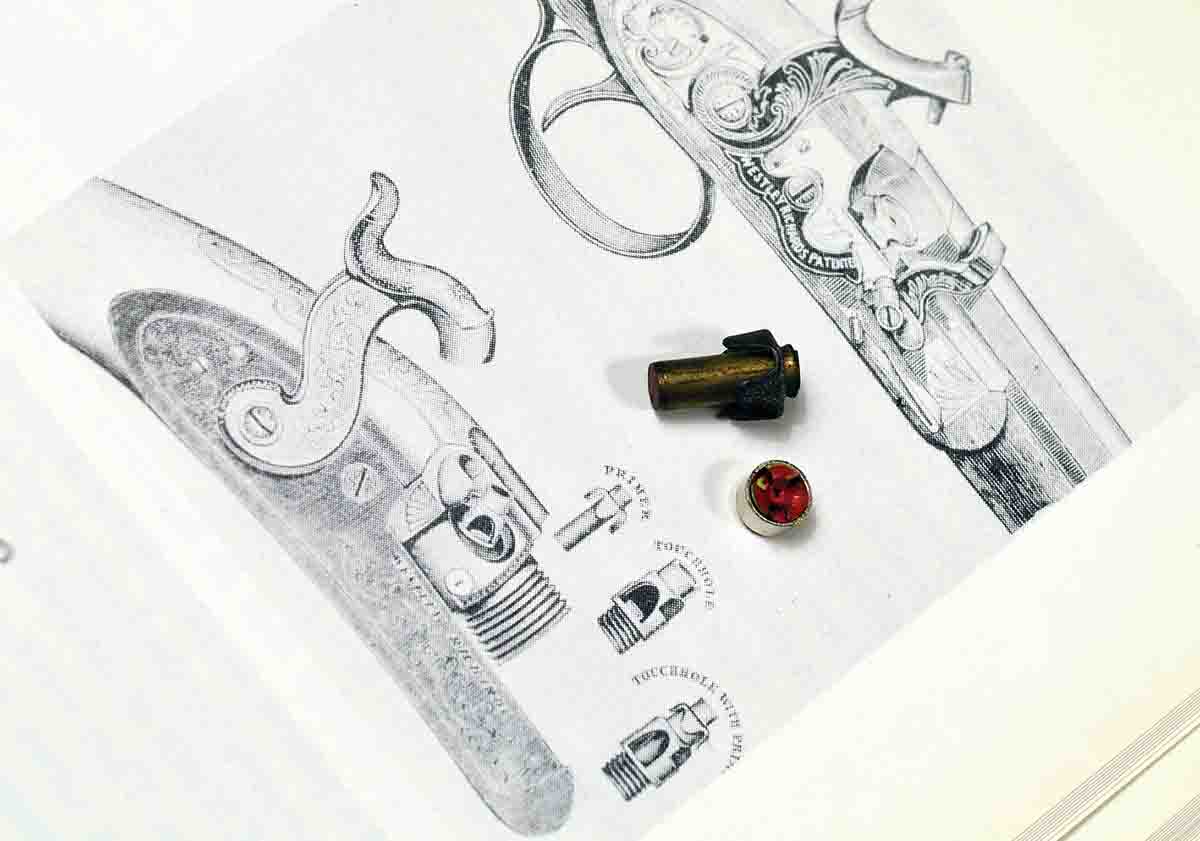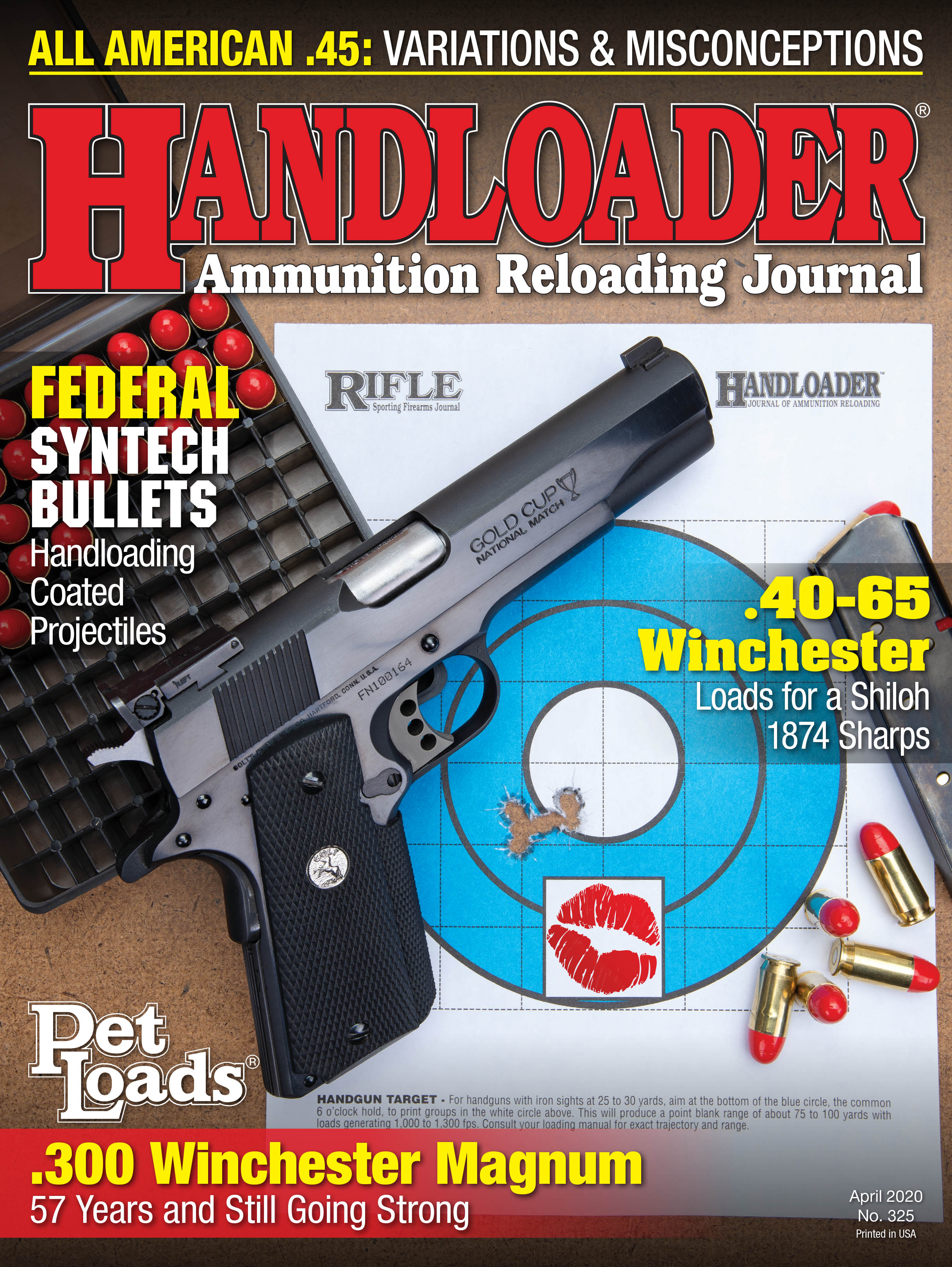In Range
Primed and (Almost) Ready
column By: Terry Wieland | April, 20

It’s one thing to recognize the potential of fulminates; it’s quite another to transform a volatile and treacherous compound into a reliable and docile ignition source for gunpowder – about the same as turning a wolverine into a golden retriever. It may be possible, but not overnight, and not without some wrong turns along the way.
As history shows, this transformation did occur between (roughly) 1805 and 1835, but to condense those 30 years into one short sentence is much like summarizing the years between 1914 and 1945 as a period of unrest in Europe. While Forsyth was beavering away in his secluded parish in the wilds of Aberdeen, Scotland, killing the boredom by hunting ducks and perfecting his inventions, Napoleon Bonaparte was intent on conquering the world and the British were intent on preventing it.
Skirmishes along the way included the Battle of Trafalgar in 1805, then the Peninsular War (1807-14) and finally the Battle of Waterloo in 1815, which put an end to Napoleon’s ambitions once and for all. Even in the isolated life of Alexander Forsyth, the French emperor played a role. In the early 1800s, the French were at the forefront of firearms development in both firing mechanisms and ammunition. Forsyth patented his first attempt at confining his new priming compounds in 1807, and shortly thereafter was offered the immense sum of £20,000 (worth almost one million pounds today) to bring his invention to France. Apparently, the offer originated with Bonaparte himself. Forsyth, to his everlasting credit (and the peaceful slumbers of the world at large) declined.
Instead, he chose to go to London, opened a shop to make guns to his own patents, hired James Purdey away from Joseph Manton to run the gunmaking operation, and not long after, went broke.
It’s intriguing to speculate how subsequent events might have unfolded had Napoleon’s Grande Armée been armed with percussion muskets instead of flintlocks. As the Duke of Wellington remarked later, Waterloo was “the nearest-run thing you ever saw” as it was. Given the effects of torrential rain the night before the battle, the water-resistant qualities of percussion ignition might well have changed the outcome.
Although Forsyth recognized the ignition possibilities of fulminates, it required a practical gunmaker to figure out the best way to put them to use. Even Forsyth himself was not sure. The explosive properties of fulminate of silver had been known for several decades, but that substance is too volatile and unpredictable for practical use. Forsyth worked with both potassium chlorate and fulminate of mercury. Both of these were used in centerfire primers a century later, which gives an idea of how far ahead of his time he was.
At first, Forsyth thought fulminates might be substituted for gunpowder and used as a propellant but quickly discarded that notion. Then he considered fulminate in powder form, performing the same function as FFFFg powder in the priming pan of a flintlock, but depending on a blow for ignition rather than a shower of sparks. Having finally settled on fulminate as an igniter rather than a propellant, Forsyth designed what came to be known as the “perfume” or “scent” bottle mechanism. It was this for which he set up his London operation and lured James Purdey away from Manton’s.
The scent bottle essentially worked by having a small steel flask (similar to a typical perfume bottle) attached to the lock. Rotated one way, it dispensed a small amount of fulminate; rotated back, it presented the fulminate to be struck by the hammer. Although Forsyth’s guns were made to the high standard one would expect from James Purdey, the company did not last long. It did, however, draw the attention of others to the potential of fulminates, and a dozen gunmakers, from England and Scotland to continental Europe, set about devising means of employing them.
One early approach was to enclose the fulminate in a paper envelope, similar to the caps used in later children’s toy pistols. Dispensed individually or from a roll, it was more convenient than the scent bottle but vulnerable to weather – no small consideration in the constant rain of England and Scotland.
One company that came up with a workable solution was Westley Richards of Birmingham. Its “tube” lock enclosed the fulminate in a copper tube that was placed over a steel post. This post had slots in its sides that allowed the flame from the tube to reach the gunpowder in the barrel. This was really the forerunner of the percussion cap and was, in effect, a more complicated method of doing what the later percussion cap did in a much simpler way.
As with many inventions, we look at it today and think, “that’s pretty obvious,” but in 1820 it was not. And, although the mechanism itself may be simple and obvious, it required certain ancillary developments to make it possible. One, how to take fulminate powder and form it into a solid, stable mass. Two, how to provide an anvil for the hammer to strike, and get the resulting flame from there to the powder.
Oddly enough, given how dominant percussion caps became in the 1830s, no one knows exactly who hit upon the idea in the first place. A Frenchman named Prelat filed the first patent, in France, and a transplanted Englishman, Joshua Shaw, patented it in the U.S. in 1822. Apparently, Shaw was a painter and inventor who made various claims regarding fulminates and caps. From all indications, he did not get rich from the percussion cap, but he did get his name in the history books.
The percussion cap as we know it, gave its name to an era in gunmaking, but then lived on to this day. There is no difference in principle between the cap that Joshua Shaw patented in 1822 and the modern primer, especially the Berdan primer as widely used everywhere except in the U.S. Compare a percussion cap that fits over a nipple on an 1835 muzzleloader with a primer you want to place in a 6.5 Creedmoor case, and there is remarkably little difference except for variations in dimensions and the exact metallurgical makeup of the cup.
Although Col. Berdan in America and Col. Boxer in England generally get credit for developing the modern primer, all they really originated was the way in which it was placed in the cavity of a cartridge. They did not invent the primer itself, which is little more than a modified percussion cap. To be fair, both Boxer and Berdan were instrumental in developing the self-contained cartridge case that would provide a gas seal in the chamber of a breechloader, and that was no small thing either. It does illustrate the way in which the development of both guns and cartridges consisted of small incremental steps as opposed to one big, sweeping, “eureka!” discovery. Everyone was involved – not only gunmakers but metallurgists (metal for caps), chemists (fulminates), inventors (Joshua Shaw) and army officers (Boxer and Berdan).
We may sum it all up in a short sentence – “between 1807 and 1835, percussion ignition displaced the flintlock” – and indeed it did. But it was not that simple. Far from it.


